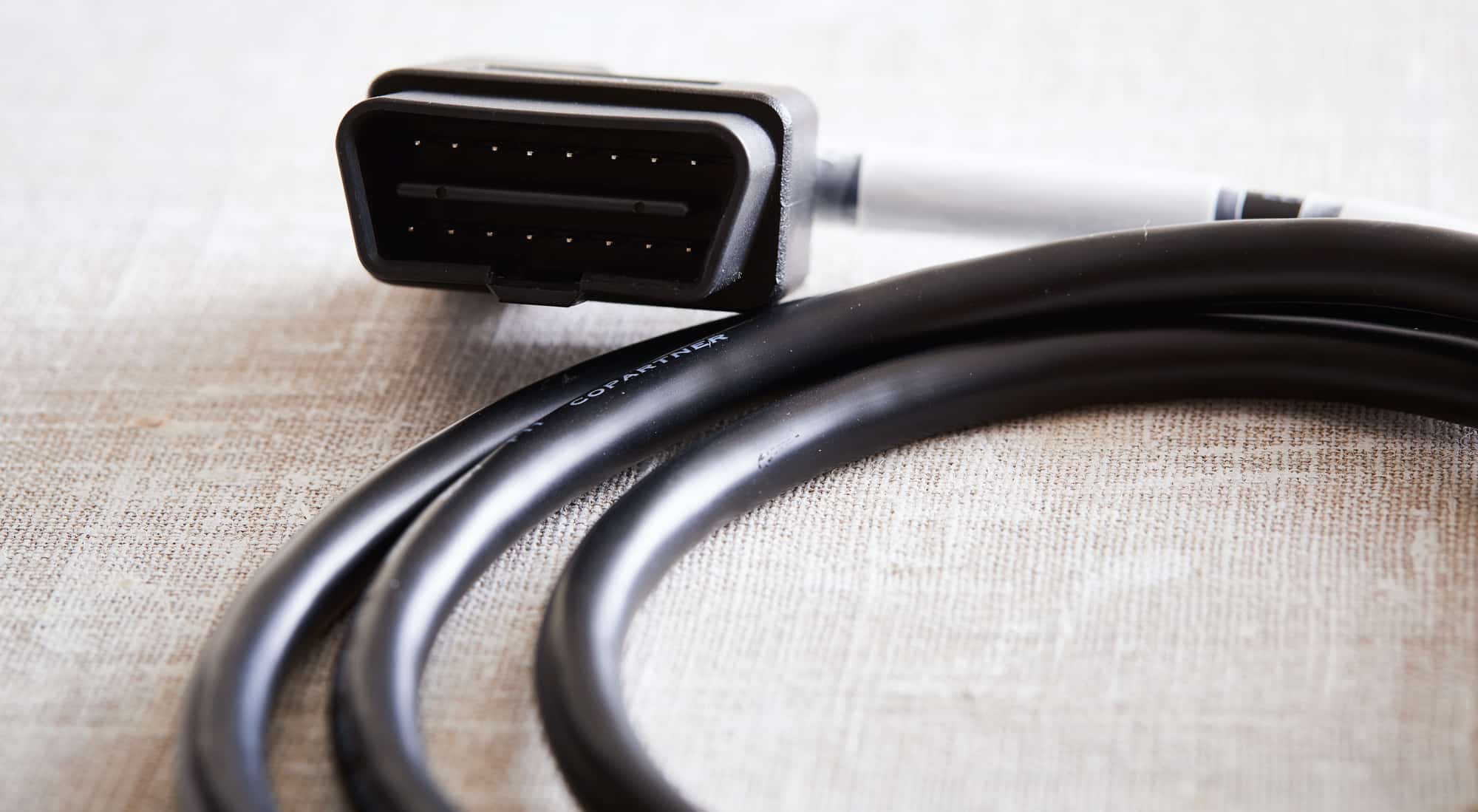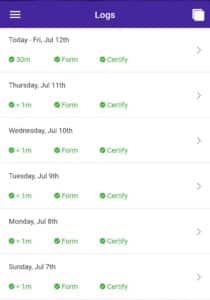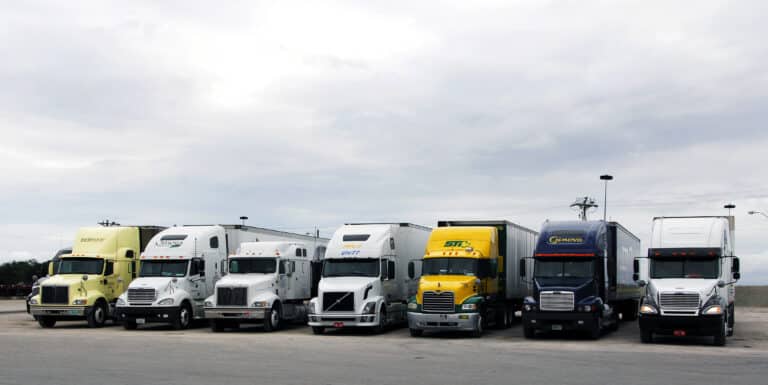If you’ve been in trucking for a while, you remember paper logbooks. Now, electronic logging devices (ELDs) have transformed how trucking operations work. These electronic systems handle what used to be done with paper and pen, automatically recording your hours of service (HOS) and creating a digital trail of your workday. They’re now a crucial tool for maintaining Transport Canada compliance.
Here’s what matters: while all carriers must use e-logs, not all systems are created equal. Choosing the right system can mean the difference between constant frustration and having a tool that stays out of your way and helps you avoid violations. Reliable truck driver e-logs should make inspections straightforward and help you achieve compliance.
In this article, we’ll explore everything truckers need to know about electronic logbooks, from their benefits to best practices and how to choose the best solution for your needs. Whether you’re looking to switch from a problematic provider or selecting your first ELD system, we’ve got you covered.
Do you have any questions? Talk to ELD Advisor: 650-405-3372 or Request Callback
What Are Truck Driver E-Logs?
Electronic logging devices are digital systems that record your hours of service. They’re essentially a digital version of the paper logbook, tracking your driving time, on-duty hours, and rest periods. The main difference is that driving time is recorded automatically by the system.

How They Work
An electronic logging system has two main parts:
- The hardware. A device that plugs into your truck’s diagnostic port (ECM). This device monitors when your truck is moving, your speed, and your mileage.
- The software. Usually a mobile app that connects to the hardware through Bluetooth or USB. This is what you’ll use to view your hours, change duty status, and show your logs during inspections.
When you’re driving, the system automatically records your activity. It tracks when you’re moving and when you’re stopped, monitoring your hours to keep you within regulations. While you can still manually enter things like on-duty not driving time for loading and unloading, the system automatically records driving time to ensure compliance with Transport Canada regulations.
Why a Reliable ELD Matters
A reliable ELD system should:
- Help you avoid violations by tracking your hours accurately.
- Make roadside inspections as quick and painless as possible.
- Provide clear records for compliance and payroll.
- Give you an accurate picture of your available driving hours.
- Work consistently without technical issues.
Many drivers have discovered the hard way that some electronic logbooks create more problems than they solve. That’s why choosing a dependable system from a reputable provider is crucial – your ELD should be an easy-to-use ally.
Why Truckers Switch to Better E Logs
Your electronic logbook is with you every mile of the way – which means any issues with the system can quickly become major headaches. Many drivers and fleet managers find themselves searching for better solutions after experiencing problems with unreliable systems. Here’s what experienced truckers often deal with:
- Connection issues. Bluetooth disconnections mid-route and hardware that fails during critical moments can disrupt your day and create compliance risks. Lost connections during a roadside inspection are particularly problematic.
- Data accuracy issues. Incorrect duty status changes or mileage calculations can create compliance headaches. This often happens when the system fails to detect yard moves or personal conveyance correctly.
- Unreliable apps. Systems that freeze or crash during inspections turn routine stops into ordeals. Also, complex, confusing interfaces waste time you could spend driving.
- Poor technical support. Many drivers report long wait times and support staff who don’t understand the urgency of their situations. Some providers offer limited support hours that don’t match when truckers actually work. When problems arise at night or on weekends, you’re often left without help.
- Hidden fees. What starts as a reasonable monthly rate often balloons with charges for concepts like activation fees or charges for accessing past log data. Some providers even charge extra for customer support after a certain level of assistance or hours.
- Long-term contracts. Many systems lock you into lengthy commitments with auto-renewal clauses and cancellation penalties. These contracts can trap you with an unreliable provider even when the service isn’t meeting your needs.
Quality electronic logbooks address these common pain points, offering more transparent pricing and flexible terms while delivering reliable performance.

Key Features to Look for in an E Log System
Choosing the right e log for truck drivers requires careful consideration of several key factors. Understanding what features matter most can help you make an informed decision that you won’t regret down the road.
Ease of Use
A good logbook system should simplify your work, not complicate it. The interface should be intuitive enough that you can handle most tasks with minimal training. This includes quick duty status changes, clear display of remaining hours, and straightforward access to logs during inspections. The best ELD systems require minimal interaction while driving, letting you focus on the road instead of wrestling with technology.
Reliability
The foundation of any elog system is its reliability. Your system needs to maintain stable connections between the mobile app and the hardware device. The hardware itself should be built to withstand the harsh conditions of daily trucking, from rough roads to extreme temperatures. Additionally, the system should have backup options for when things go wrong and maintain functionality even in areas with poor cell coverage.
Compliance Features
Beyond basic operation, your e log system must keep you compliant with Transport Canada regulations. This starts with certification by an authorized third party, but extends to practical features that prevent violations. The system should automatically track duty status changes while giving clear warnings before you risk a violation. During inspections, accessing and transferring logs should be straightforward and quick.
Effective Customer Support
Quality support can make or break your experience with a logging system. Look for providers that offer support when you actually need it – including nights and weekends. The support team should understand trucking operations and be able to solve problems quickly. Multiple language options ensure all drivers can get help when they need it.
Extra Features
While basic compliance is essential, modern e log systems can offer additional features that make your job easier. IFTA mileage reporting can save hours of paperwork each quarter. GPS tracking provides accurate location records for both safety and efficiency. Vehicle diagnostics help catch maintenance issues before they become expensive repairs. These advanced features should integrate seamlessly with the basic system without complicating daily operation.
HOS247 Electronic Logbook: Built for Truckers
For drivers, staying compliant while managing your workload can feel like balancing on a tightrope. That’s where HOS247’s electronic logbook system comes in—a solution designed to handle the heavy lifting so you can focus on the road ahead. Built specifically for the challenges of trucking, we offer tools and features that simplify compliance and keep you moving. This is why truckers choose HOS247:
- Effortless compliance. HOS247 automatically tracks your driving hours, rest periods, and on-duty time, ensuring you meet Transport Canada regulations without the hassle of manual logs.
- Durable hardware. Built for the demanding conditions of the road, the hardware handles rough terrains, extreme temperatures, and constant vibrations, delivering consistent performance.
- Intuitive app design. With an easy-to-navigate interface, the app minimizes learning curves, allowing you to view logs, change duty status, and access important records with just a few taps.
- Stable connectivity. A stable Bluetooth connection keeps your data flowing between the ELD device and your smartphone or tablet, ensuring uninterrupted tracking even in remote areas.
- Top-rated technical support. HOS247 offers multilingual customer support seven days a week. Whether you need help in English, Spanish, Russian, or Polish, their team has you covered—and they’ll call you back if your connection drops.
- Flexible plans. No contracts, no pressure. Monthly plans let you adapt to your needs, and a two-week trial allows you to test the system risk-free.

HOS247 is more than a compliance tool; it’s a trusted partner for truckers who want a dependable system that works with them, not against them. With a focus on ease of use, reliable technology, and dedicated support, it’s a solution that helps drivers stay compliant and efficient without unnecessary headaches.
Tips for Choosing the Right Provider
Success with e-logs starts with selecting the right provider. Here’s what experienced truckers prioritize in their search:
Verify Your Basics First
- Device compatibility. Before getting too far in your research, confirm the system works with your truck’s ECM port and your preferred mobile devices. Most modern trucks are compatible, but older models may have specific requirements.
- Fleet size support. Some providers excel with small fleets but struggle with larger operations. Others build systems for large carriers that are too complex for owner-operators. Look for a provider that regularly serves fleets of your size.
- Technical requirements. Consider your mobile device needs. A good provider should be clear about minimum device specifications and whether they offer tablet options.
Look Beyond the Sales Pitch
- User reviews. Pay attention to what current users say about long-term reliability and support quality. Look for recent reviews that reflect the current state of the service.
- Support hours. Verify when support is actually available. Many providers advertise “24/7 support” but route after-hours calls to automated systems or overseas call centers unfamiliar with trucking.
- Real costs. Ask specific questions about additional fees, hardware replacement costs, and contract terms. Get everything in writing before committing.
Try Before You Buy
- Trial period. Choose providers offering trial periods that let you test the system in real working conditions.
- Test support. Use the trial to contact support at different times and test their responsiveness and knowledge.
- Full feature access. Make sure the trial includes all features you plan to use, not just basic functions.
Making the right choice in an electronic logbook provider can significantly impact your daily operations and bottom line. Take your time during the selection process, and don’t let aggressive sales tactics rush your decision. Remember that switching providers later can be costly and disruptive, so it’s worth investing the time upfront to find a solution that truly meets your needs.
ELD Implementation and Best Practices
A smooth transition to a new e-log system requires proper planning and execution. Here’s how to set yourself up for success:

Before Installation
Start with a clear implementation plan:
- Driver communication. Keep drivers informed about the upcoming change and its timeline. Clear communication reduces resistance and anxiety about the new system.
- Hardware inventory. Account for all vehicles needing devices and verify compatibility before ordering.
- Training schedule. Plan training sessions that don’t disrupt driving schedules. Include both initial training and follow-up sessions after drivers have some hands-on experience.
During Installation
Focus on proper setup and verification:
- Systematic installation. Install devices one vehicle at a time, testing thoroughly before moving to the next.
- Settings verification. Double-check all settings, especially those affecting compliance like time zones and cycle rules.
- Test runs. Complete test runs with each vehicle to ensure proper operation before regular use.
After Implementation
Monitor and adjust as needed:
- Early support. Have extra technical support available during the first few weeks to quickly address any issues.
- Performance tracking. Watch for patterns in any problems that arise and address them systematically.
- Regular updates. Keep drivers informed about system updates or new features as they become available.
Ongoing Best Practices
Maximize your e-log investment with these proven practices:
- Regular audits. Check logs periodically for accuracy and compliance, addressing any patterns of violations.
- Preventive maintenance. Keep both hardware and mobile devices updated and in good working condition.
- Continuous training. Provide refresher training on advanced features once drivers are comfortable with basics.
A successful e-log implementation goes beyond just installing devices and training drivers. It requires ongoing attention to detail and a commitment to using the system to its full potential. By following these best practices and maintaining open communication between drivers and management, you can turn your e-log system into a valuable tool rather than just another compliance requirement.
Conclusion
The right e-log system should work reliably day after day, helping you stay compliant while making your job easier. Whether you’re selecting your first ELD or looking to switch providers, remember that reliability, ease of use, and quality support form the foundation of a good system.

HOS247 delivers all the essential features truckers need in an Transport Canada e-log for truck driver ELD: reliable hardware, user-friendly software, and outstanding customer support. Our commitment to the trucking community is reflected in flexible terms, transparent pricing, and multilingual support seven days a week.
We understand that switching e-log providers is a significant decision. That’s why we offer a two-week trial that lets you experience the HOS247 difference firsthand. Test our system in real working conditions, explore our features, and see why drivers consistently rate us among the top ELD providers.

I’ve co-founded, built and managed several transportation-related businesses. Now, I’m a founder and CEO of HOS247 – an AI Transportation Platform for trucking companies, freight brokers and other logistics operations. We are transitioning old-style operations to technology-advanced logistics entities and help them to grow their businesses. ELDs (electronic logging devices), fleet tracking and management 2.0 combined with AI-powered dispatch tools.












Trucking businesses in Canada need their fleet to safely transport products to their customers. It can be challenging to supervise the individual operations of each truck. Fleet managers often rely on calls to contact drivers or on second hand information

Transport Canada has mandated that most commercial drivers who are required to maintain records of duty status must do so through an electronic logging device come January 1, 2023. These devices help monitor drivers’ time on the road to meet

Fleet management systems are designed to help transportation operations run more efficiently. Full visibility of the fleet’s activities allows managers to find ways to improve operations and keep costs low. Successful transportation businesses have evolved with technology and harness the